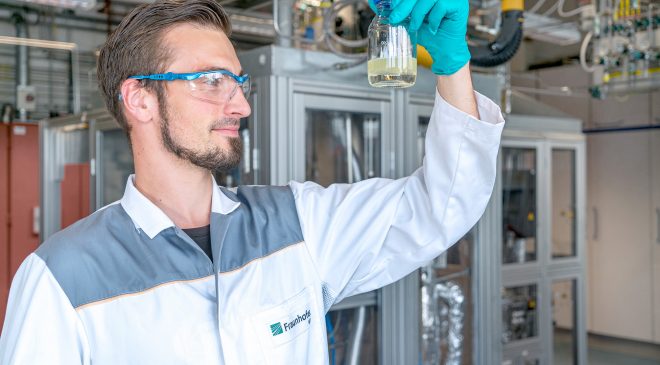In the Future, Ceramic Membranes Could Reduce CO2 in the Cement Industry.
By Mauro Nogarin
According to the International Energy Agency, cement is responsible for 7% of global CO2 emissions and in recent years the cement industry has made many efforts to reduce them. Just in Germany, every year the industry produces about 188 million tons of CO2, but also invested approximately €350 million over the last years in new process technology, energy efficiency, alternative fuels and environmental protection.
 |
| Credit: Fraunhofer IKTS |
 |
Today, thanks to an ambitious research project financed by the German Research Ministry, this reality can be better.
Scientists at the Fraunhofer Institute for Ceramic Technologies and Systems IKTS in Dresden have developed reactors based on ceramics, which use CO2 and water vapor to produce raw materials for the chemical industry in a much more efficient and climate-neutral way.
Alongside the strategy of avoiding CO2 emissions altogether, there are a number of technologies that transform unavoidable CO2 into valuable products, but these so-called power-to-X processes are currently still expensive.
At the same time, the German energy policy must significantly increase the share of renewable energies in its electricity supply in order to achieve its climate targets.
Strategies
Various strategies are currently being pursued for the use of unavoidable CO2 emissions; for example, to produce chemical raw materials. For this process to be as climate-neutral as possible, the power required for it must be obtained from renewable energies.
Scientists at Fraunhofer IKTS have now succeeded in developing a pilot plant, consisting of ceramic-based reactors, in which CO2 can be converted into climate-neutral chemical raw materials. In these reactors, the individual processes are smartly coupled, and material and energy flows intensified.
Unavoidable CO2 emissions occur in large quantities for example in the cement and lime industries. Fraunhofer IKTS uses a wide range of ceramic components and technologies to harness this CO2.
For example, ceramic filter cartridges remove dust from exhaust fumes. The CO2 can only be filtered out by ceramic membranes after such coarse cleaning.
The CO2 thus obtained is converted into carbon monoxide at over 750°C in a newly developed ceramic high-temperature electrolysis reactor. At the same time – and this is remarkable – hydrogen is produced from steam in the same reactor, hence the name co-electrolysis. Put together, carbon monoxide and hydrogen form synthesis gas.
Electrolysis Stacks
The reactors used are electrolysis stacks (SOEC). They were developed at IKTS and have already successfully demonstrated a long-term stability of more than 4,000 hours. Compared to established alkaline or PEM electrolysis, high-temperature electrolysis requires considerably less electrical energy and also enables the direct production of synthesis gas. To produce this in a climate-neutral way, the electrolysis reactor is operated with electricity generated from renewable sources.
In a subsequent Fischer-Tropsch reactor, also developed at IKTS, the synthesis gas is then converted into chemical raw materials – for example into long-chain hydrocarbons.
Such an increase in efficiency to more than 55% can only be achieved through closed and thus environmentally friendly material and energy cycles. This means that by-products, such as short-chain hydrocarbons and waste heat, are no longer released into the environment, but flow directly back into the system.
The German institute is now looking at the next steps so that in the future many more products can be produced from CO2 emissions in a climate-neutral way. A reactor concept of this kind can also be applied to the production of lubricants.
Within the next three years, this reactor concept will be transferred to pilot scale at the Bergmann Kalk lime works in Kasendorf in Upper Franconia. Colyssy is the name of this ambitious project, which is funded by the German Federal Ministry of Education and Research and was launched at the beginning of the year as part of the HYPOS consortium.
Mauro Nogarin is Cement Americas’ Latin American contributor. From 1997 to 2001 he was a reporter for the Italian news agency ASCA from Germany to follow the economic events of ECOFIN. At the same time, he began a strong partnership with the Italian magazine Focus with issues related to European scientific research. Back in Italy after six years of residence in the city of Heidelberg (Germany), he worked from Italy for the weekly Stern and Bild Zeitung. Since 2005, he has lived in South America (Bolivia) and worked with the Italian geopolitics review Limes, the Italian gas and oil journal Staffetta Quotidiana, the Colombian oil magazine Petroleo Internacional, the German RE Sun and Energy, the U.S. magazine Renewable Energy World (Pennwell), the World Energy Project (Università di Bologna), Pan Americana Construction magazine and Worldoil magazine. He can be reached at [email protected].




